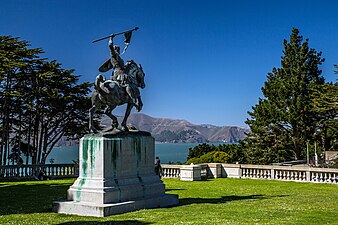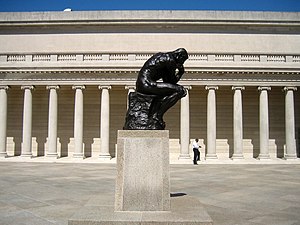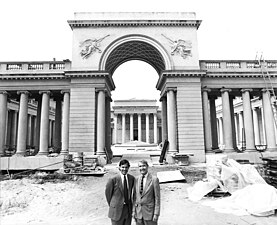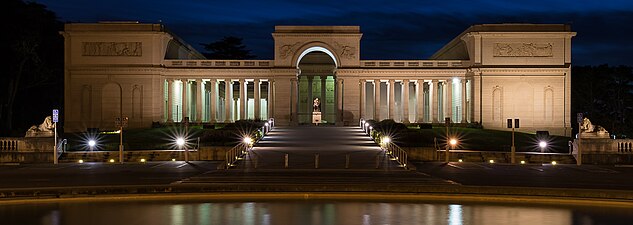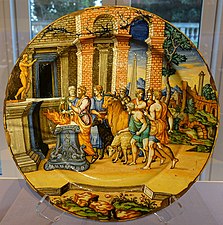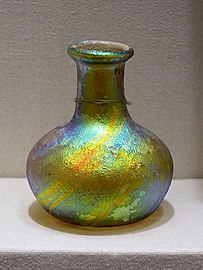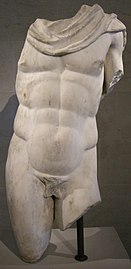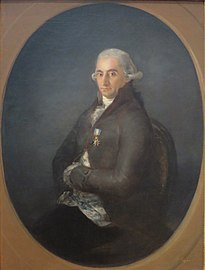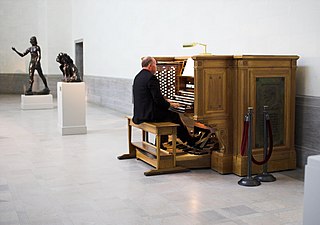
The Spreckels Organ is a pipe organ that was designed by Ernest M. Skinner. It was installed in 1924 at the Legion of Honor museum in San Francisco, California. Public performances are held on Saturdays, 4:00–4:45 pm.
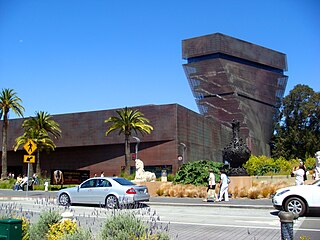
The de Young Museum, formally the M. H. de Young Memorial Museum, is a fine arts museum located in San Francisco, California. Located in Golden Gate Park, it is a component of the Fine Arts Museums of San Francisco, along with the Legion of Honor. The de Young is named for early San Francisco newspaperman M. H. de Young.

The Fine Arts Museums of San Francisco (FAMSF), comprising the de Young Museum in Golden Gate Park and the Legion of Honor in Lincoln Park, is the largest public arts institution in the city of San Francisco. FAMSF's combined attendance was 1,158,264 visitors in 2022, making it the fifth most attended art institution in the United States.
Bouquets to Art is an annual floral exhibition hosted by the De Young Museum of Fine Arts Museums of San Francisco. Florists, designers and garden clubs are invited to present floral interpretations of works in the museum's permanent collections, and the floral displays are presented in juxtaposition with the works that inspired them.

Maryhill Museum of Art is a small museum with an eclectic collection, located near what is now the community of Maryhill in the U.S. state of Washington.

Adolph Bernard Spreckels was a California businessman who ran Spreckels Sugar Company and who donated the California Palace of the Legion of Honor art museum to the city of San Francisco in 1924. His wife, Alma, was called the "great grandmother of San Francisco". His 1912 mansion is in Pacific Heights and is San Francisco Landmark #197.
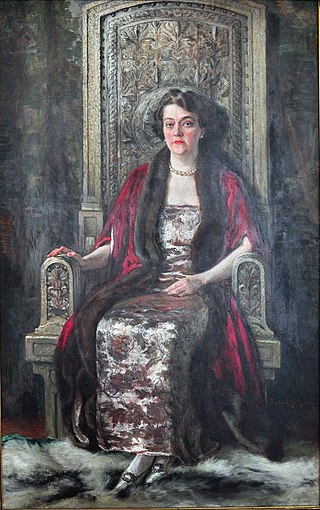
Alma de Bretteville Spreckels was a wealthy socialite and philanthropist in San Francisco, California. She was known both as "Big Alma" and "The Great Grandmother of San Francisco". Among her many accomplishments, she persuaded her first husband, sugar magnate Adolph B. Spreckels, to donate the California Palace of the Legion of Honor to the city of San Francisco.
Thomas Patrick Campbell is the director and CEO of the Fine Arts Museums of San Francisco, overseeing the de Young and Legion of Honor museums. He served as the director and CEO of the Metropolitan Museum of Art between 2009 and 2017. On 30 June 2017, Campbell stepped down as director and CEO of the Metropolitan Museum of Art under pressure and accepted the Getty Foundation's Rothschild Fellowship for research and study at both the J. Paul Getty Museum in Los Angeles and at Waddesdon Manor, in the UK.

Serge Petrovitch Ivanoff was a French painter of Russian origin.
Roland Conrad Petersen is a Danish-born American painter, printmaker, and professor. His career spans over 50 years, primarily in the San Francisco Bay Area and is perhaps best-known for his "Picnic series" beginning in 1959 to today. He is part of the Bay Area Figurative Movement.

Arthur Putnam was an American sculptor and animalier who was recognized for his bronze sculptures of wild animals. Some of his artworks are public monuments. He was a well-known figure, both statewide and nationally, during the time he lived in California. Putnam was regarded as an artistic genius in San Francisco and his life was chronicled in the San Francisco and East Bay newspapers. He won a gold medal at the 1915 San Francisco world's fair, officially known as the Panama–Pacific International Exposition, and was responsible for large sculptural works that stand in San Francisco and San Diego. Putnam exhibited at the Armory Show in 1913, and his works were also exhibited in New York, Philadelphia, Chicago, Paris, and Rome.

Betty Merken is an American painter and printmaker who lives and works in Seattle, Washington.

Howard Edwin Hack was an American representational painter and graphic artist, with works in numerous museum collections. Known for an innovative approach to a variety of media, as well as use of traditional oil paints, Hack began working in the late 1940s. He was active in the San Francisco Bay Area.
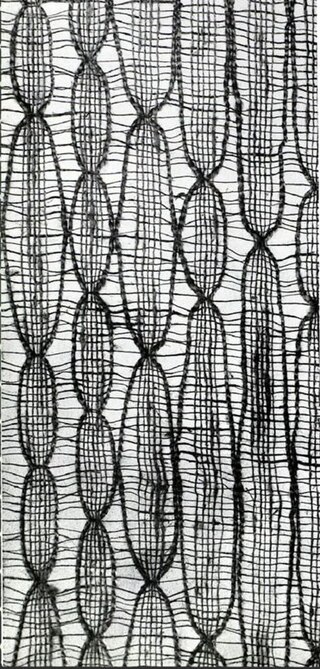
Kay Sekimachi is an American fiber artist and weaver, best known for her three-dimensional woven monofilament hangings as well as her intricate baskets and bowls.

George Albert Harris, also known as George Harris (1913–1991), was an American painter, muralist, lithographer, and educator. He was a participant in the WPA Federal Art Project and was among the youngest artists on the mural project at Coit Tower. Harris' style is California Modernism, often working in abstraction, focusing primarily on still lifes and portraits.

Helen Elizabeth Phillips, also known as Helen Phillips Hayter was an American sculptor, printmaker, and graphic artist active in San Francisco, New York, and Paris. During her life, she contributed to various avant-gardes of the 20th century, with a personal, de-conditioned vision, which evolved from the surrealist practices the 30s to the adoption of a repeated geometric unit to express the three-dimensional movement in sculpture. Her biomorphic, hermetic imaginary, her use of positive and negative spaces in both sculpture and printmaking, and her strong, pure color, opened new paths in artistic expression.
Roy Ward Ragle was a San Francisco artist known for his self-portraits executed in large woodcuts. Inspired by the Japanese tradition of Ukiyo-e, his prints were linear in character, finely detailed, but with imagery traced in a web of thin, coiled and looping lines, creating a woodcut that was often mistaken for an etching. Ragle’s persistent attempt of capturing his own features in his woodcuts was triggered by a diagnosis of Crohn’s disease in the early 1970s, a chronic illness that would mark his life and his art. The medications so affected and altered his features that his prints became a way of preserving and rescuing a sense of identity. As Kenneth Baker noted in Roy Ragle's obituary: "Mr. Ragle (...) had long depicted death as his companion in woodcuts and prints in other media, in a manner reminiscent of European dance of death imagery and to Mexican folk art tradition."
Stephanie Skalisky is an American artist who is best known for her series of works she made while working for The New Yorker as a cartoonist.
Richard Benefield is executive director of the George Rickey Foundation, Inc., as well as an independent consultant to museums and educational organizations including the Heard Museum, University of Arizona, and Fine Arts Museums of San Francisco. He previously held director positions at The David Hockney Foundation, the Fine Arts Museums of San Francisco, The Walt Disney Family Museum, and Harvard University Art Museums.
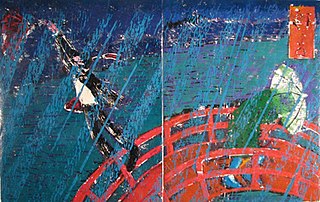
Robert Brokl is an American visual artist and activist based in the Bay Area, known for expressive woodblock printmaking and painting that has focused on the figure, landscape and travel for subject matter. His visual language combines the influences of German Expressionism, Japanese woodblock printing and the Bay Area Figurative Movement with a loosely autobiographical, Romantic interest in representing authentic personal experience, inner states and nature. Critics and curators characterize his style by its graphic line, expressive gestural brushwork, tactile surfaces and sensitivity to color, mood and light.




